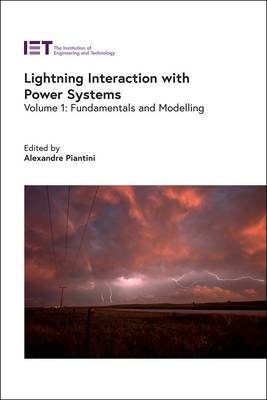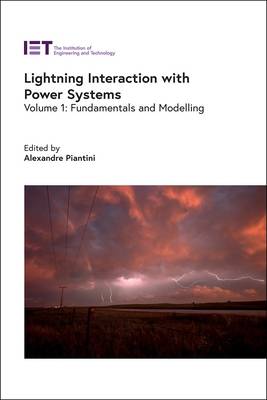
- Afhalen na 1 uur in een winkel met voorraad
- Gratis thuislevering in België vanaf € 30
- Ruim aanbod met 7 miljoen producten
- Afhalen na 1 uur in een winkel met voorraad
- Gratis thuislevering in België vanaf € 30
- Ruim aanbod met 7 miljoen producten
Lightning Interaction with Power Systems
Fundamentals and Modelling
Omschrijving
The need to improve the reliability and robustness of power systems and smart grids makes protection of sensitive equipment and power transmission and distribution lines against lightning-related effects a primary concern. Renewable electricity generation capacity has been increasing all over the world, and lightning can cause failures either by hitting the turbines or panels directly or inducing transients on the control systems that lead to equipment failure, malfunction or degradation.
This two-volume set assesses how global lightning may respond to global climate change, provides thorough coverage of the lightning phenomenon and its interaction with various objects, and covers methods for the effective protection of structures and systems. It is a valuable reference for researchers in the fields of lightning and power systems, for transmission and distribution line engineers and designers, and is a useful text for related advanced courses.
Volume 1 covers fundamentals and modelling of lightning interaction with power systems, including lightning and climate change; lightning phenomenon and parameters for engineering applications; lightning return stroke models for electromagnetic field calculations; lightning geolocation information for power system analyses; lightning attachment to overhead power lines; field-to-transmission line coupling models; lightning response of grounding electrodes; surge protective devices; modelling of power transmission line components; and modelling of power distribution components. Volume 2 addresses various applications including power substations, transmission lines, overhead distribution systems and networks, smart grids, and wind and photovoltaic systems.
Specificaties
Betrokkenen
- Uitgeverij:
Inhoud
- Aantal bladzijden:
- 456
- Taal:
- Engels
- Reeks:
Eigenschappen
- Productcode (EAN):
- 9781839530906
- Verschijningsdatum:
- 27/03/2020
- Uitvoering:
- Hardcover
- Formaat:
- Genaaid
- Afmetingen:
- 157 mm x 236 mm
- Gewicht:
- 884 g

Alleen bij Standaard Boekhandel
Beoordelingen
We publiceren alleen reviews die voldoen aan de voorwaarden voor reviews. Bekijk onze voorwaarden voor reviews.










